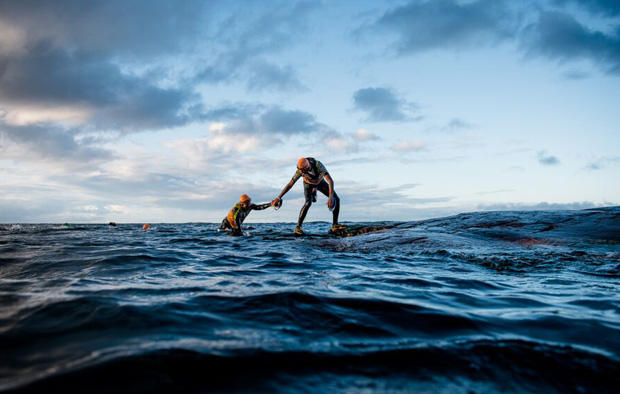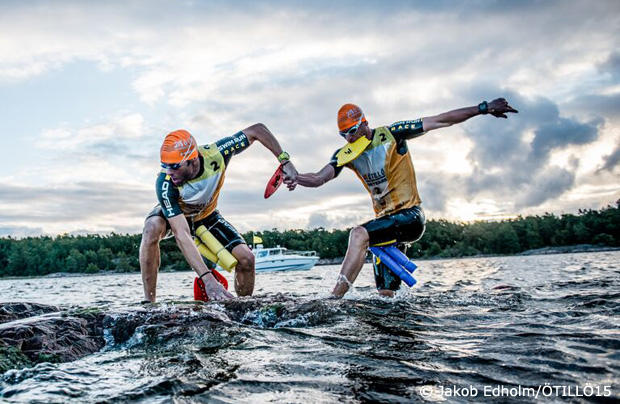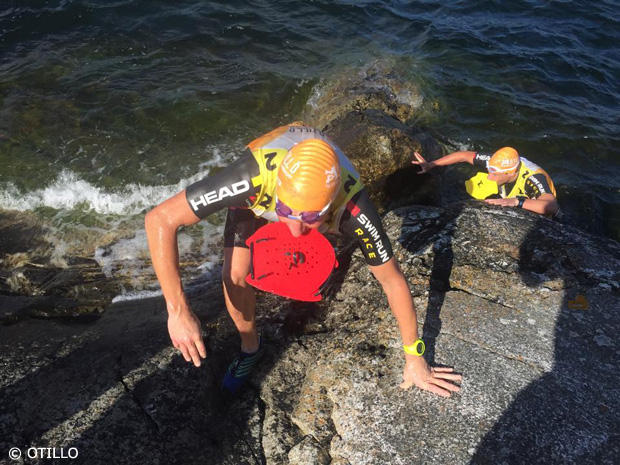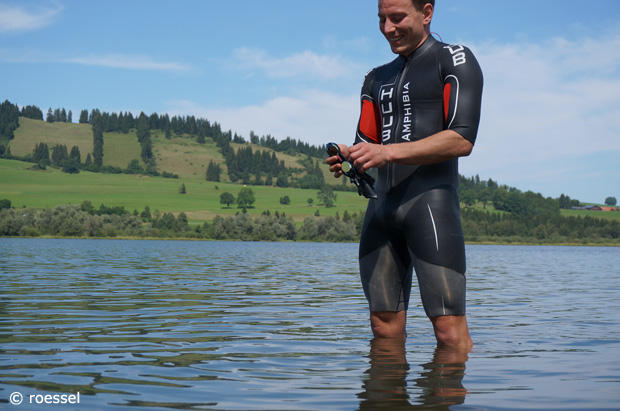An Orca SwimRun wetsuit review
After the recent excitement surrounding the ÖtillÖ SwimRun World Championship, there is a lot to talk about the gear side of things. As discussed in the recent article about the HUUB SwimRun suit, more and more companies are paying attention to this growing market. Currently most of the SwimRun specific wetsuits can only be ordered in Northern Europe, and the market in the rest of the world has yet to catch up. As most SwimRun competitions happen in Sweden and Norway, perhaps manufacturers are waiting for SwimRun contests to become popular in other regions.
Orca is a renowned label for full body neoprene triathlon wetsuits. Originally from Auckland, New Zealand and now residing in Spain, the brand was created back in 1993. Resident triathlete Scott Unsworth was not pleased with the quality of available wetsuits when he began the sport. He was keen to create a triathlon specific suit. The rest is history as the brand rapidly increased in popularity with age group and professional triathletes around the globe. Orca made excellent choices in terms of sponsorship, such as 2004 Olympic champion Hamish Carter and current Ironman titleholder Sebastian Kienle, and the brand is well regarded in the sport. Throughout the years, Orca has offered some revolutionary technologies (Apex 2’s AirLite or the 3.8’s AirRelease Panels) to the wetsuit market. With a wide range of suits from beginner models to top-of-the-line suits, they found a way to bring their characteristic produces to all types of athletes. Knowing Orca and its willingness to innovative new technologies, it is no surprise that they are making a suit for SwimRun. Wetsuits are a vital part of the gear for this sport, and Orca undoubtedly wants to a piece of the market in an area they know very well.

There are specific features that SwimRun athletes require in a wetsuit, and the Orca designers responded by introducing a major zipper in the front of the suit. The zip works well – it is fast and easy to use. It is very helpful to have the option of unzipping the front of the suit on the run sections. [SwimRun athletes wear their wetsuits throughout the race.] Overheating was a major problem when using regular triathlon wetsuits. After racing with in the new SwimRun specific suit, Orca sponsored athlete and 2015 ÖTILLÖ 7th place finisher Jesper Svensson said, "The front zipper made a vast difference to us. Through the long run segment across the Ornö island, we normally would take off the top of our suits. This year we never had to waste time undressing and putting the suit back on!" While Orca did a great job with the zipper, the neoprene covering over the top of the suit does not really make sense. The zip needs to be used repeatedly during a race, and the cover seems bothersome and unnecessary. The front zipper is a fundamental part of the wetsuit, and it needs to be easy to access. During the race, bib numbers must be worn on the outermost layer, consequently any extra layers should be avoided to keep things simple and efficient.
One of the huge benefits to regular triathlon wetsuits is the integrated pockets. The Orca suit has two small compartments on the front, inside the suit. Although the pouches are sufficient to hold gels, they could be a little bit bigger to allow for more storage. During shorter races this wouldn't be a problem, but more storage would be helpful for longer competitions. However access to the pockets is no problem and it is easy to put things in and take things out.
Most of the SwimRun specific suits come as a full body suit, and therefore need to be cut to the individual needs of the athlete. Orca's suit comes with pre-cut legs but with long arms. Frenchman Nicolas Remires who finished 3rd at this year’s ÖTILLÖ battle said, “The long sleeves are tight and thin, perfect to feel the water!” Also the front of the thigh is buoyed with an extra layer of neoprene (8mm thick) to provide more buoyancy. Most of the racers use pull buoys, but nonetheless this is a good add-on to optimize the body's position in the water. Even though the thigh area is thicker, this part of the suit still feels stretchy and the extra thickness is hardly noticeable while running on land. In the water the additional flotation is noticeable and definitely a plus.
Another great feature of the suit is the exceptionally stretchy and flexible torso portion. Orca used very thin but sturdy material that offers more elasticity while running in neoprene. In the water, it is not noticeable that the neoprene is thinner in the torso. And, although the torso is thinner, back part of the suit has extra material that comes in handy when descending over rocks and other rough parts of the course. A SwimRun suit must stand up to some heavy handling outside the water. Orca understood this and used sturdier material on the affected portions of the suit. Previously shredded suits were common during competitions. Nicolas Remires, who won this year's competitions on Utö and in Boras approves: “A special, more resistant panel on the butt area is makes this wetsuit more secure and allows us to push harder on land.”
As athletes prefer a flexible upper on their wetsuits, the suit has extra elasticity on the upper part of the body. While swimming in the suit, it offers plenty of flexibly around the shoulders and throughout the upper body. With the front zipper, there can be concerns about the suit holding water. The wearer needs to be careful while putting on the suit to prevent a poor fit and therefore water flowing into the top. Once the athlete finds the right fit, there shouldn't be any problems as the suit allows for a good closure.
With its first SwimRun specific suit, Orca unquestionably made an impact on the market. Orca used its 19 years of expertise in creating this suit, and the greatest benefit is flexibility while running. In the future, Orca might want to create a suit with greater air flow, perhaps using technology similar to the “AirRelease” panels in their 3.8 suit.
Similar to the zipper on the back, Orca fitted a small cover flap on top of the front zipper.
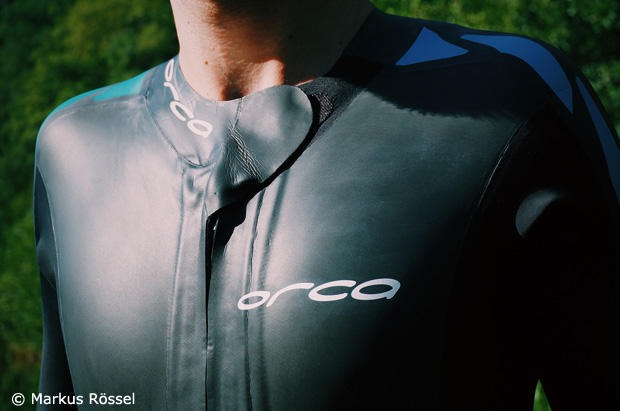
Once the cover flap is open, racer can use the zip. This is a fundamental practice during the run sections of SwimRun racing and a huge benefit to cool the body.
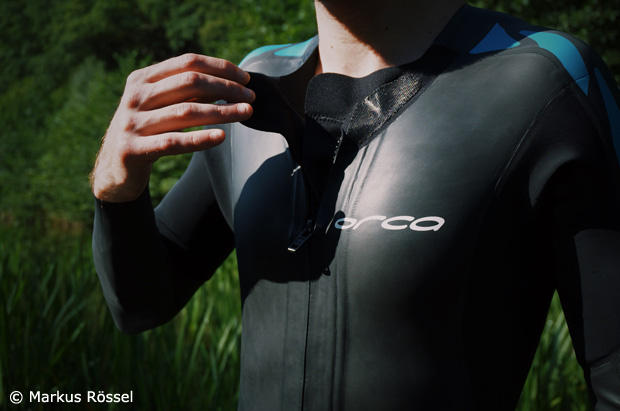
Two small pouches on the inside of the suit offer space for gels.
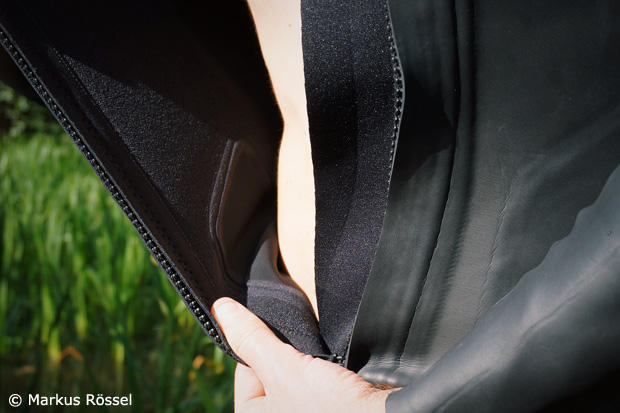
There is some 8mm neoprene on the front side of the thighs. This helps with buoyancy in the water.
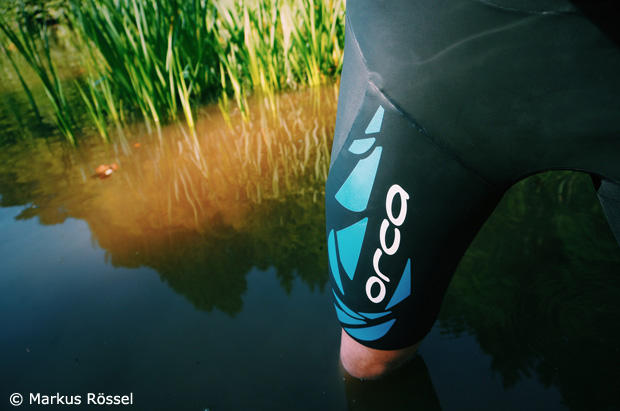
Like all current SwimRun models, the Orca SwimRun come with a zipper in the back, which is not really required with this kind of suits.
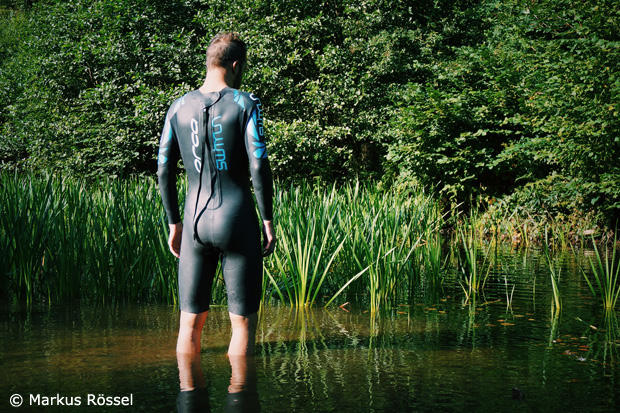
Soft but still sturdy neoprene makes this suit a superb suit to run in, without water performance loss.
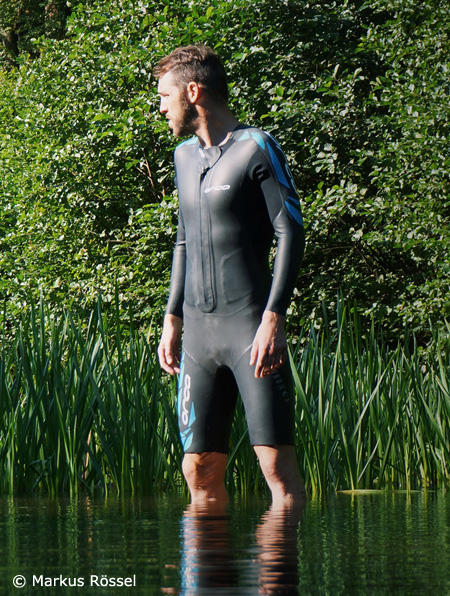
A detailed look at the front pouches and the zipper.
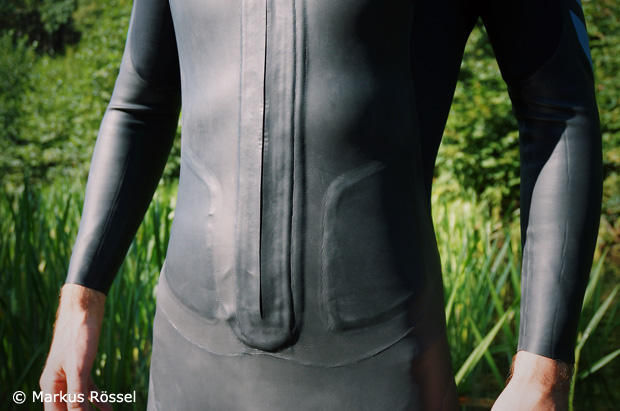
Great elasticity along the shoulder parts guarantee an unhindered arm movement in the water.
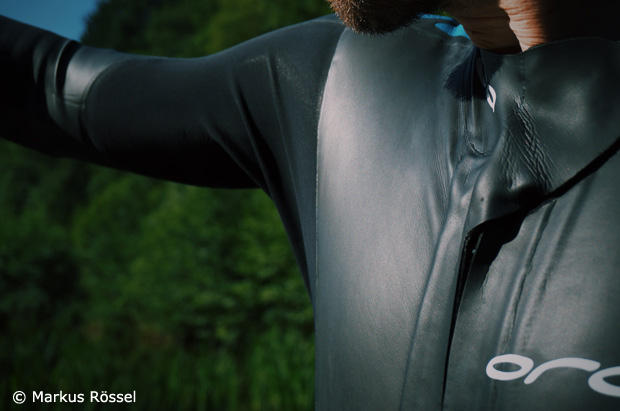
It will be exciting to see what the next generation of SwimRun specific suits will look like from this neoprene powerhouse.



